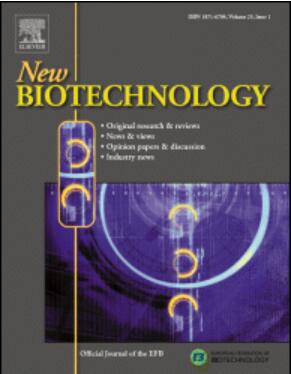Genomic analysis and process optimization for nigericin production in a newly-isolated antimicrobial Streptomyces
IF 4.5
2区 生物学
Q1 BIOCHEMICAL RESEARCH METHODS
引用次数: 0
Abstract
Streptomyces, the dominant species of actinomycetes, contribute to a large proportion of bioactive natural products. In our previous study, over 2400 culture extracts were subjected to bioassays against Candida albicans and Staphylococcus aureus. Among these, Streptomyces javensis named Inha503, was found to produce nigericin, which exhibits antimicrobial activity against gram-positive bacteria, such as Micrococcus luteus and S. aureus. This study aimed to understand the genomic features of S. javensis Inha503 and optimize the downstream process to improve the titer of nigericin derivatives. Identification of the nigericin biosynthetic gene cluster (BGC) in the chromosome was confirmed using whole-genome bioinformatics and core BGC knockout results. The cultivation time was optimized to 10 days, and nigericin derivatives were identified and quantified using LC/MS. Among the seven-production media for Streptomyces, the highest production of nigericin was obtained in the R5 medium, which exhibited a 1.75-fold increase compared to the previous conditions. Additionally, the nigericin extraction process was optimized using ethyl acetate as a single solvent and a mixture of ethyl acetate and ethanol in a 7:3 ratio. The highest titer of nigericin derivatives were obtained in R5 medium after 10 days with extraction using a mixture of ethyl acetate and ethanol, implying that optimized purification processes with genetic insights of S. javensis Inha503 as a promising platform for bioactive compound production such as nigericin.
求助全文
约1分钟内获得全文
求助全文
来源期刊

New biotechnology
生物-生化研究方法
CiteScore
11.40
自引率
1.90%
发文量
77
审稿时长
1 months
期刊介绍:
New Biotechnology is the official journal of the European Federation of Biotechnology (EFB) and is published bimonthly. It covers both the science of biotechnology and its surrounding political, business and financial milieu. The journal publishes peer-reviewed basic research papers, authoritative reviews, feature articles and opinions in all areas of biotechnology. It reflects the full diversity of current biotechnology science, particularly those advances in research and practice that open opportunities for exploitation of knowledge, commercially or otherwise, together with news, discussion and comment on broader issues of general interest and concern. The outlook is fully international.
The scope of the journal includes the research, industrial and commercial aspects of biotechnology, in areas such as: Healthcare and Pharmaceuticals; Food and Agriculture; Biofuels; Genetic Engineering and Molecular Biology; Genomics and Synthetic Biology; Nanotechnology; Environment and Biodiversity; Biocatalysis; Bioremediation; Process engineering.
 求助内容:
求助内容: 应助结果提醒方式:
应助结果提醒方式:


